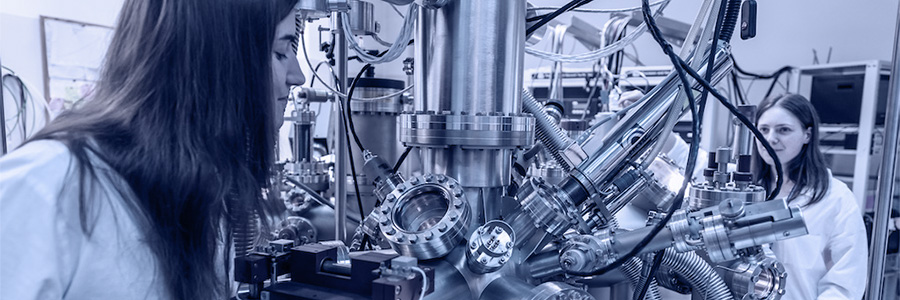
Surface Nanostructures
Aparatura
System UHV I
Microscopes are designed to image surface nanostructures in a mesoscal in real time in the temperature range from (-180 ÷ 1200°C). Microscopes can measure samples prepared both ex-situ and in-situ.
Preparation chambers of microscopes are equipped with:
- Molecular Beam Epitaxy (MBE)
- Auger’ electron spectroscope (AES),
- low energy electron diffractometer (LEED),
- residual gas analyzer (RGA),
- ion gun,
- gas dosing system
System UHV II
The system is designed for investigation of solid state surfaces (bulk and powdered) at ultra high vacuum (UHV)conditions. Available techniques:
- Molecular Beam Epitaxy (MBE)
- Auger’ electron spectroscope (AES),
- low energy electron diffractometer (LEED),
- Scanning Tunneling Microscopy (STM)
- Conversion Electron Mössbauer Spectroscopy (CEMS)
- Ion bombardment and etching
- cooling/heating of samples in the range of 100 K – 2000 K
- residual gas analyzer (RGA),
- Gas dosing system
- base pressure < 1*10-10 mbar
System UHV III:The system is designed for investigation of solid state surfaces (bulk and powdered) at ultra high vacuum (UHV)conditions.
The system is designed for investigation of solid state surfaces (bulk and powdered) at ultra high vacuum (UHV)conditions. Available techniques:
- Molecular Beam Epitaxy (MBE)
- X-ray Photoelectron Spectroscopy (XPS)
- Scanning Probe Microscope (SPM:STM/AFM)
- Low Energy Electron Diffraction (LEED/AES)
- Temperature Programmed Desorption (TPD); (RGA SRS 200)
- cooling/heating of samples in the range of 100 K – 2000 K;
- Ion bombardment and etching
- Residual gas analyzer (RGA)
- Gas dosing system
- High-pressure catalytic reactor
- base pressure < 1*10-10 mbar.